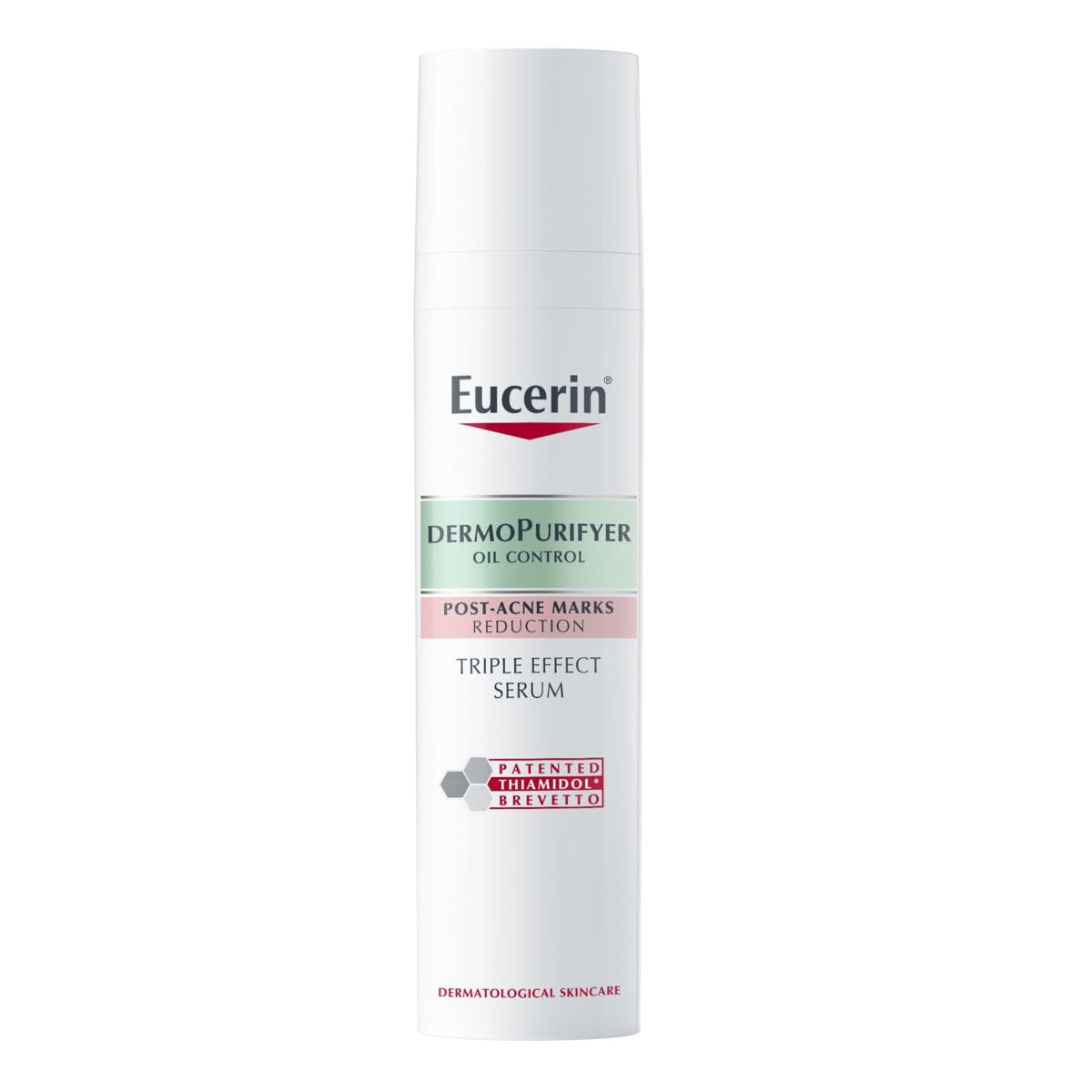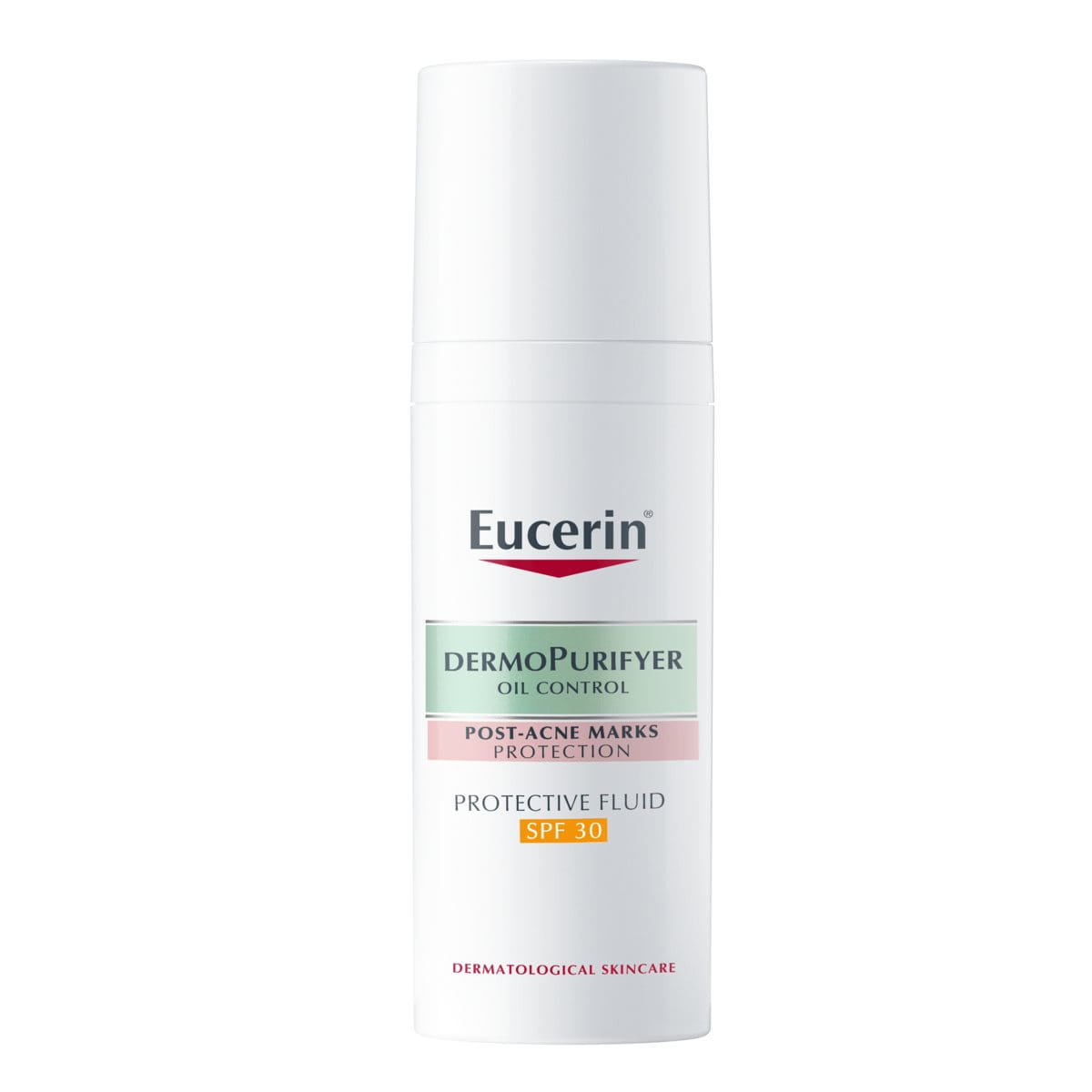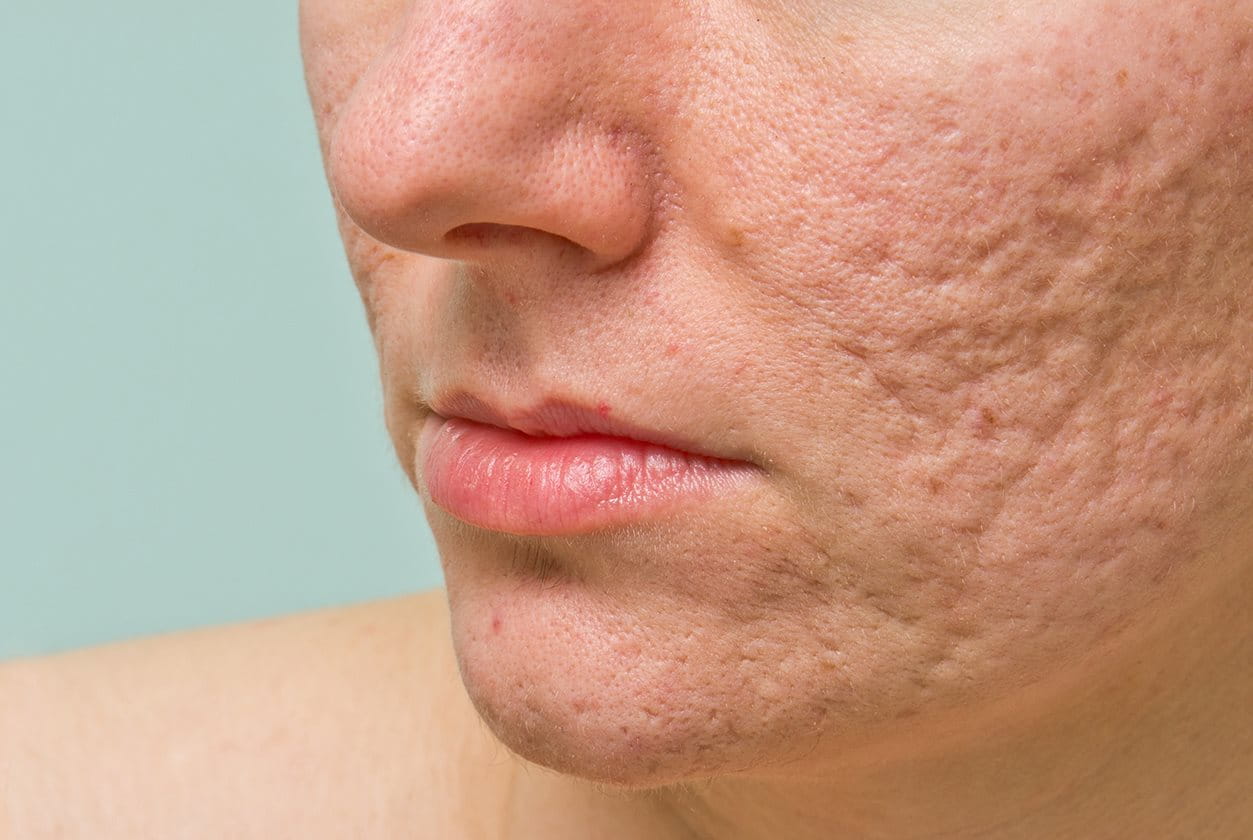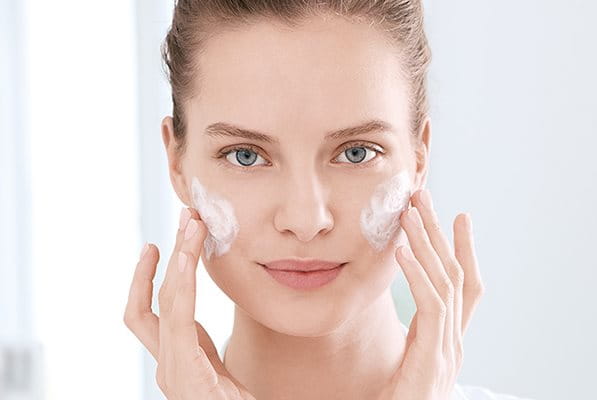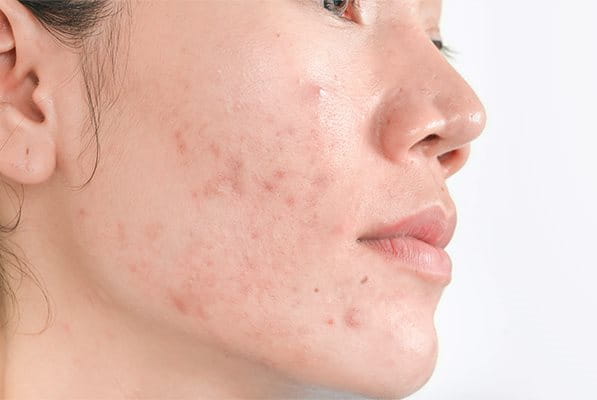It seems unfair but, for many people, even after the blemishes have healed their skin still bears the signs of acne. One of these signs is pimple marks caused by pigmentation issues, and they can be very distressing.
Thankfully, there are options available for lightening these pimple marks so that they are less noticeable and, sometimes, invisible. This article looks at the different measures you can try and also explains how the pimple marks come about in the first place.
To find out more about how to reduce or remove scars caused by acne, read acne scarring.
What causes pimple marks?
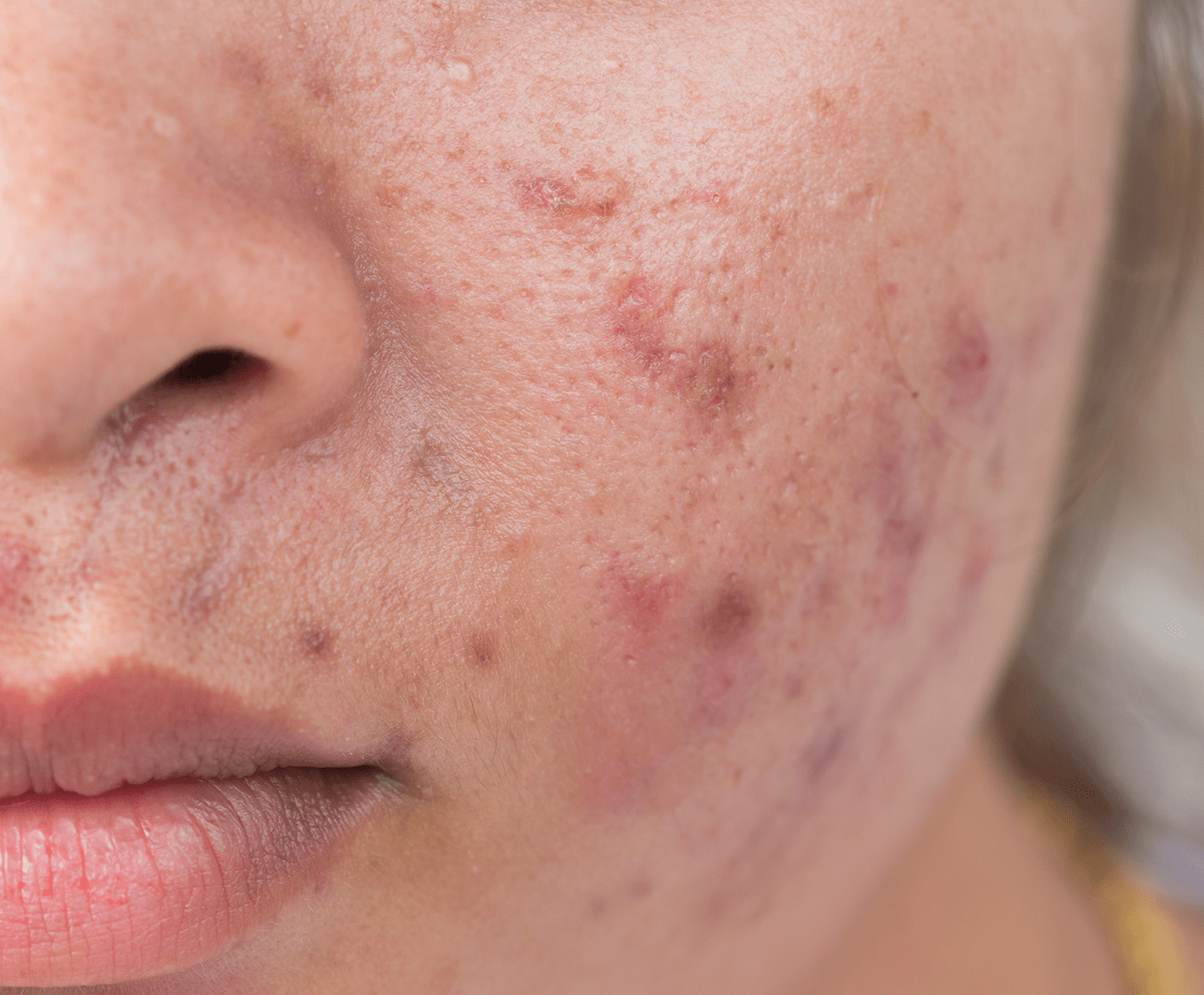
Red or brown marks that remain after blemishes have healed are caused by pigmentation and are known as post-inflammatory hyperpigmentation marks − post-inflammatory because they occur after the inflammation itself (the blemish) has died down.
The production of melanin, which is responsible for the colouring in our skin, is triggered by sunlight. Our skin produces melanin in order to protect itself from the sun and it is this melanin that normally causes skin’s healthy glow.
People with dark skin are normally more affected by hyperpigmentation marks than those with a lighter skin tone as skin pigmentation is stronger in dark skin.
You can find out more about what causes hyperpigmentation here.
Our 3-step routine for post-acne marks

The aftermath of an acne breakout can leave the skin with unwanted red spots or marks, which may be uncomfortable or even painful. This is called post-inflammatory hyperpigmentation (PIH), which leaves the skin discoloured or darkened after acne or if a wound has healed.
Remember not to squeeze or pick at pimple marks. Instead, try a tested skincare routine for blemished skin to help reduce or remove pimple marks and spots. Building a skincare routine for blemished skin plays a major role in your skin’s recovery.
Our three-step routine targets PIH while reducing oil production and protecting against sun damage.
DermoPurifyer Oil Control Cleansing Gel starts by gently and thoroughly removing dirt, make-up and excess sebum from the face. The soap-free formula, with 6% Ampho-Tensides, leaves blemish-prone skin feeling clean and fresh without the shine.
Next, use the DermoPurifyer Triple Effect Serum. This features patented Thiamidol to reduce post-acne marks, reduce blemishes, and control shine.
Finish your routine with the DermoPurifyer Protective Fluid SPF 30, which helps prevent post-acne marks from darkening due to the sun.
Acne marks vs acne scars
People often use the terms acne mark and acne scar interchangeably, however they are intrinsically different and may require specific treatments.
Acne marks are a result of skin inflammation and are usually flat, dark marks which may be red or brown in colour. Acne scars, on the other hand, are often indented or raised and occur when the body is unable to carry out its natural healing process.
To find out more about how to reduce or remove scars caused by acne, read acne scarring.
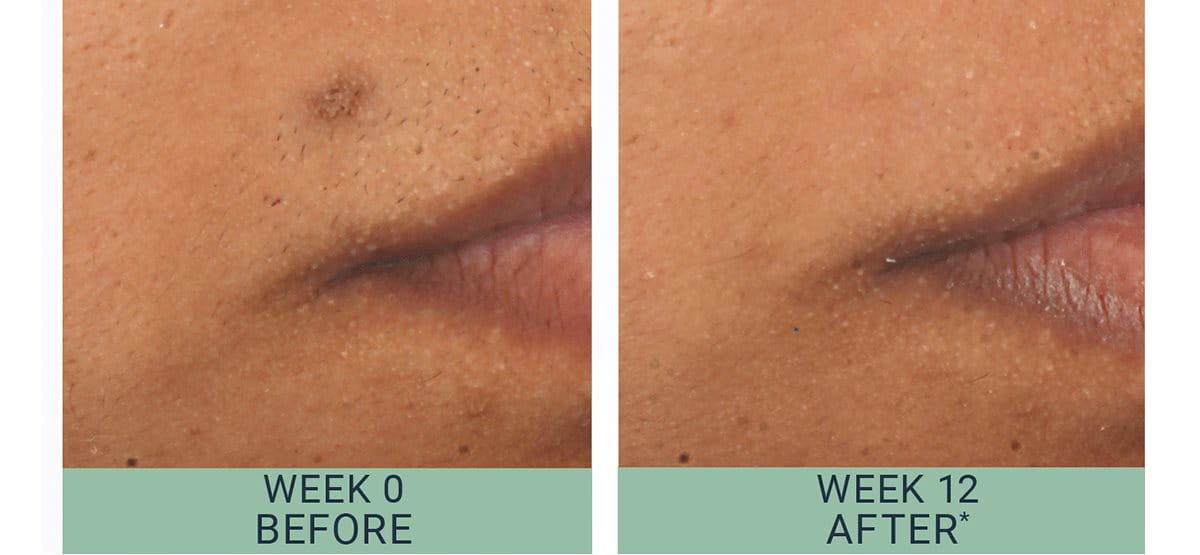
Acne marks tend to fade away on their own and the timeline can range from a few weeks to several months, varying from one person to the next. However, in some cases more complex treatments may be required to aid the healing process.
The DermoPurifyer Protective Fluid SPF 30 has enhanced efficacy when used together with the Triple Effect Serum, with 95% of users agreeing the combination beats post-acne marks*.
*Product in use study with 100 volunteers, 8 weeks of regular usage twice a day of both Serum and Fluid SPF 30
How can I reduce or remove pimple marks?

Thankfully there is a range of treatment options available that can help fade or reduce pigment marks and, in some cases, remove them completely. These include brightening or exfoliating creams that can be bought over the counter at a pharmacy. More intense treatments − such as chemical peels and laser therapy − need to be carried out by a dermatologist or a beautician who specialises in this area.
If your acne marks are bothering you, consult your doctor who will be able to give advice on the best treatment options for your skin. Here are those most commonly used:
Chemical Peels for Acne
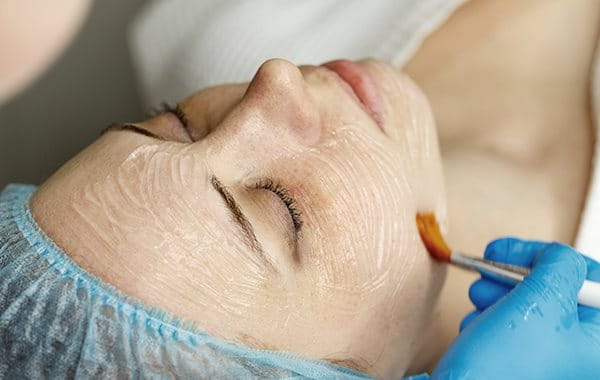
Chemical peels use acids such as Salicylic Acid and Tricholoroacetic Acid (TCA) in varying concentrations to remove the outermost layers of the skin, taking the melanocytes and pimple marks with them. As the skin regenerates itself, there is a good chance that the pigment marks won’t reform.
Fruit acid peels are chemical peels using concentrated fruit acids. Fruit acid peels aren’t suitable for people with Rosacea, reddened areas of skin or enlarged blood vessels as the treatment can exacerbate symptoms. Learn more about acne vs rosacea here.
N.B. Skin can be very sensitive after a chemical and/or fruit acid peel, so it’s important you avoid direct sunlight (and solariums) and apply a high sun protection factor such as Eucerin Sun Gel-Creme Oil Control Dry Touch SPF50+.
Brightening creams
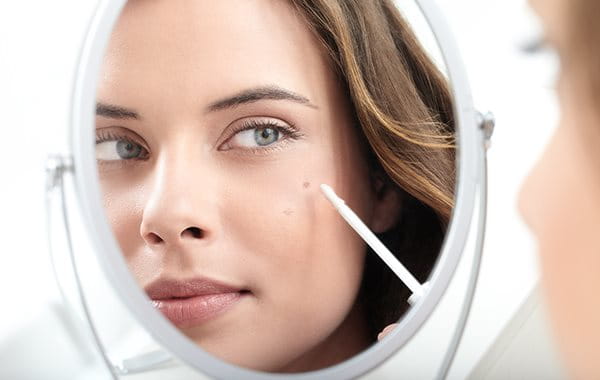
Once your acne has healed you can apply creams that have been specially formulated to fade acne marks. Be sure to choose products that are non-comedogenic so as not to promote a recurrence of acne.
Key actives such as B-Resorcinol, one of the active ingredients in the Eucerin Anti-Pigment range, reduce melanin production by inhibiting the enzyme that forms melanin. Products such as the Eucerin Anti-Pigment Spot Corrector have been clinically and dermatologically proven to reduce the appearance of dark spots for visibly brighter skin.
Exfoliating treatments
The innovative Eucerin DermoPurifyer Skin Renewal Treatment has been specially formulated to reduce the appearance of pimples, papules and pustules as well as to fade acne marks. With a 10% Hydroxy Complex, it contains a highly effective combination of peeling agents − Glycolic Acid, Salicylic Acid and Polyhydroxy Acid – which help to resurface skin and promote skin regeneration.
Laser and light therapy

Pimple marks caused by acne can also be treated with laser or light therapy.
Different light strengths, waves and pulses are used to heat up and damage pigment cells (the medical term for this is photothermolysis). The body breaks down the residues and pigment marks made.
The disadvantage of these therapies is that the laser can cause mild skin damage. In unfortunate cases, this can lead to inflammation, which in turn brings with it an increase in post-inflammatory hyperpigmentation – the opposite of the desired result.

